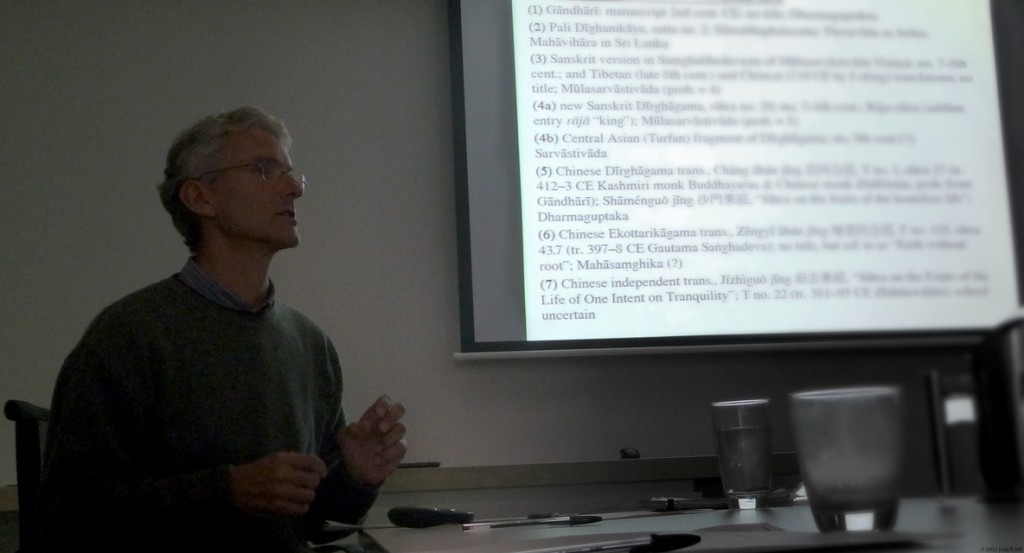Christopher D. Emms. Evidence for Two Mūlasarvāstivādin Vinaya Traditions in the Gilgit Prātimokṣa-sūtras. M.A. thesis, McMaster University, 2012. 127 pp. Open Access Dissertations and Theses, Paper 7337. [URI/PDF]
From the abstract
The Sanskrit prātimokṣa-sūtras contained in the Gilgit Buddhist manuscripts have been identified as belonging to the Mūlasarvāstivāda school. However, the identification of these manuscripts as Mūlasarvāstivādin texts is problematic. A key factor for determining the school affiliation of a prātimokṣa is the rule order. The Gilgit prātimokṣa-sūtras, however, differ in their rule order. In this thesis, I explore the relationship of these Gilgit prātimokṣa-sūtras to Mūlasarvāstivādin literature. […] I argue that we have evidence for two distinct Mūlasarvāstivādin Vinaya traditions within the Gilgit prātimokṣa-sūtras.









